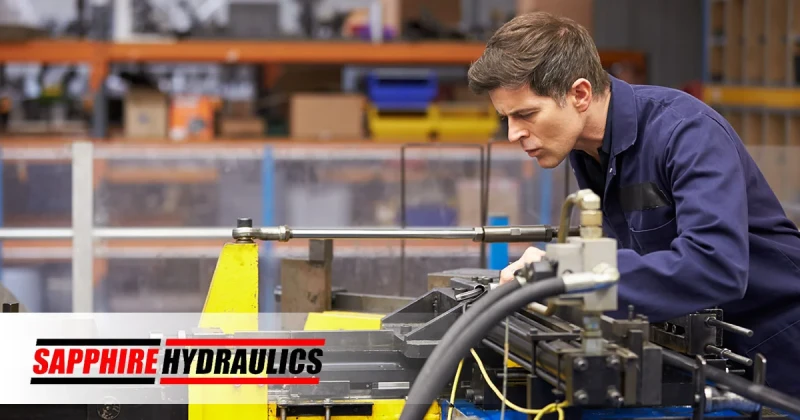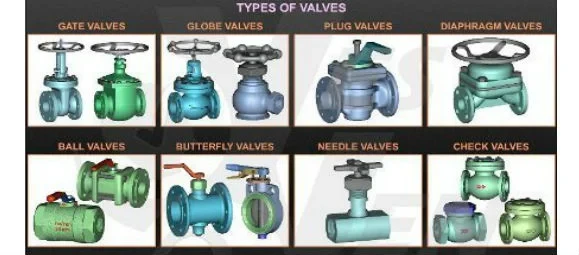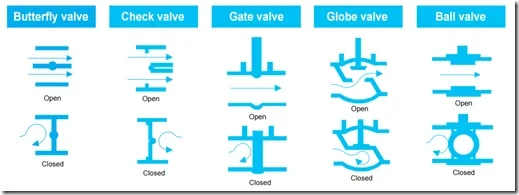January 14, 2020

How Does a Hydraulic Flow-Control Valve Work?
Hydraulic flow-control valves are essential components of most hydraulic systems, and they act as regulators and shut-offs for many systems that have fluid flowing through them. This post will focus on the functionality of hydraulic flow-control valves, the types that are available today, and what applications they are most frequently used in.
What is a hydraulic flow-control valve?
A
flow-control valve in any hydraulic system is tasked with the regulation of fluid speed, and by regulating the rate, it can control the speed of an actuator in the system.
The flow rate is also responsible for determining the rate of energy transfer at any specific level of pressure. Since actuator speed determines the horsepower or energy rate transfer, the actuator speed is therefore considered to be an important function impacting the flow rate. By contrast, directional control doesn't really deal with energy management but instead directs the energy transfer system to the appropriate location in the system at just the right moment.
You can think of directional control valves as something like fluid switches that enable the appropriate contacts, in that they direct a kind of high-energy input stream to an actuator inlet, thereby providing a necessary return path for oil, which is low-energy in nature.
If the stream doesn't arrive at the appropriate place at just the right time, it won't really matter if you are able to control the energy transfer by using flow controls.
Thus it can be said that a secondary function of directional control devices would be to time the cycle of events. Since fluid can be managed by a directional control valve, it is also possible to achieve flow rate measurement and pressure control through their usage.
How does it work?
Flow-control valves in hydraulic systems are generally used to regulate the pressure in the flow rate of either gases or liquids as they travel through a pipeline.
Flow-control valves are extremely important for optimizing the performance of the system, so choosing the right valve for the job is likewise crucial: a flow-control valve manages the flow rate in any given portion of a system of hydraulic circuitry.
Within a hydraulic system, a flow-control valve will be used to control the rate of flow to
hydraulic cylinders and motors, which in turn will impact the speed of both of those devices.
Hydraulic flow-control valves also have a secondary function of managing the energy transfer rate at a specified pressure. The most common kinds of hydraulic flow-control valves include the following designs: needle, diaphragm, butterfly, plug, and ball.
The simplest design for any flow-control valve will be one that has an aperture that can be opened or closed for the purpose of managing the flow rate. Ball valves are some of the simplest types of flow-control options, and these consist of a ball that is attached to a simple handle.
Since the ball has a hole through its center, when the handle is turned, the ball’s hole is aligned with valve openings so that fluid-stream becomes possible.
When it's desired to reduce or shut off the flow, this handle can be used to position the ball perpendicular to all of the valve openings, which effectively blocks the fluid. Most other flow-control valves operate in a similar way, i.e. they provide some mechanism for either allowing flow to take place or blocking it.
When assembling hydraulic circuitry, there are a number of options possible for controlling flow, and these can range from the very basic to ultra-sophisticated controls managed by electronics. The most complex of these options are able to detect pressure changes and make appropriate responses, or they are capable of monitoring flow rate and making the correct response when that rate goes beyond a predefined threshold.

The Process Piping
Types of flow-control valves
Because hydraulic flow-control valves have a number of different functions within hydraulic systems, there are
several different types of flow-control valves to accommodate each of those functions.
In general, the categories which these flow control valves fall into are: gate, diaphragm, check, globe, and pinch valves.
Diaphragm valves are used for throttling functions, and they're suitable for applications that involve the usage of corrosive liquids at low pressure and low temperature. They have leak-proof seals that will guarantee a tight shutoff, and they're very easy to maintain and clean. Gate valves are suitable for high-pressure and high-temperature applications and are generally used for on/off non-throttling functions which require a straight-line stream of fluid and minimal restriction.
Globe valves are used to start, stop, and regulate fluid, and they're good for on/off applications as well as throttling applications. A globe valve is a general-purpose flow control valve that is very popular in applications involving high temperatures.
Check valves are unidirectional and are frequently used in hydraulic systems, pumps, and irrigation sprinklers. They have two ports, one for fluids to enter through and one for fluid discharge. Because they're able to prevent the backflow of fluids, these types protect compressors and pumps within the system.
Pinch valves are an inexpensive category of flow-control valves and use a pinching effect to manage the flow of fluids. They provide 100% tight fluid shut-offs and are commonly used in industries related to food and beverage, wastewater, and chemical application.

Piping-Info
Final Thoughts
When you're looking for the best option in a hydraulic flow-control valve, you should contact the leader in all hydraulic services:
Sapphire Hydraulics. In addition to offering the finest line of products in the industry, Sapphire Hydraulics also specializes in the
hydraulic hose repair, maintenance, and service of all
custom hydraulic equipment.
Although Sapphire is located in the greater Houston area, its service area extends far beyond those boundaries, and a great many industries throughout the state of Texas have benefited from the products and services offered by Sapphire Hydraulics.
Contact us today with any questions you have about our products or services or to receive a quote on any type of part or service you require.
 24 hour on-site hydraulic repair, replacement, hose & fitting services.
24 hour on-site hydraulic repair, replacement, hose & fitting services.


